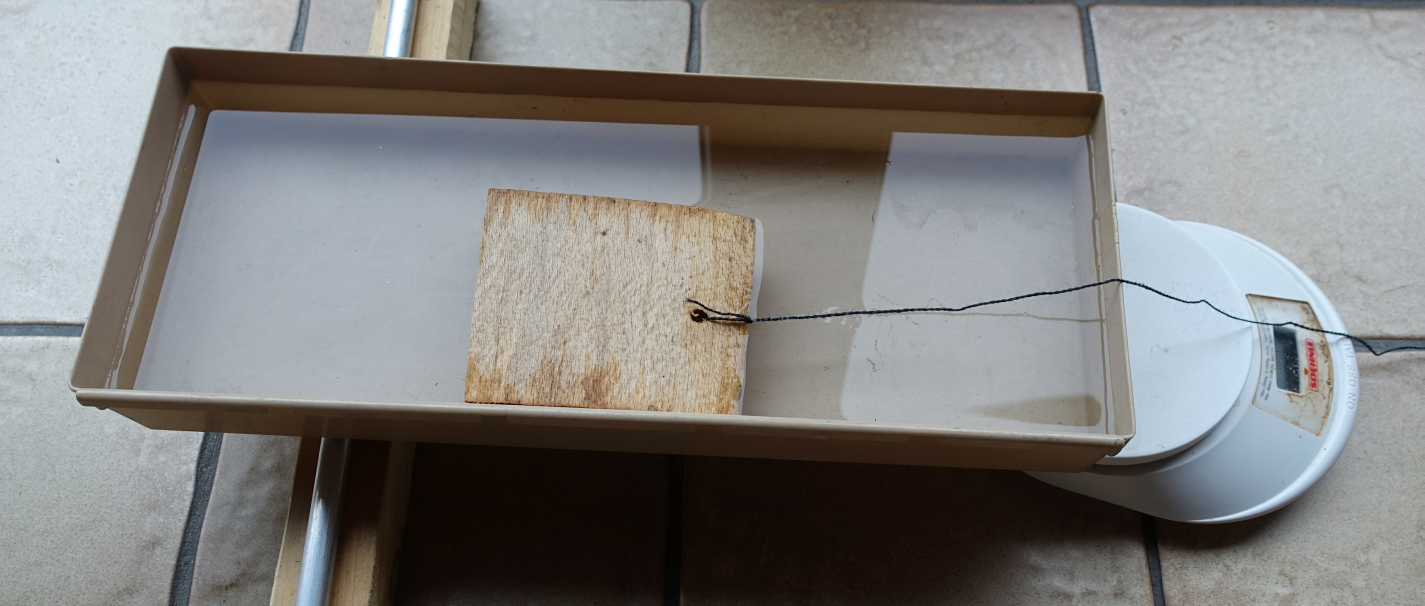
The discovery of Archimedes' principle
Two similar experiments with different progress are presented. This difference points to an important principle.
1. experiment
One end of a rectangular 40 cm long bowl filled with water is held by a kitchen scale (see Fig.1). The bowl can be seen as a lever which rotates on a round rod. A 150 g wooden block, which initially floats on the water above the round rod, is slowly pulled from left to right on a thread towards the scale as shown in Figs. 1 . No increase in weight can be seen on the balance, which is set to 0 at the beginning. The display of the balance can deviate slightly from the initial value of 0 during the pulling process due to a wave in front of the wooden block.
Note: The balance shows negative values when it is unloaded after a setting to 0 g.

fig.1
2. experiment
So much water is poured out of the long bowl that the wooden block can lie firmly on the bottom of the bowl at a low water level. Then, as in the first experiment, the wooden block is pulled over the long bowl from left to right towards the balance. Here, the display of the balance increases significantly.
1. Why does the scale not show an increasing load on the scale in the first experiment as it does in the second experiment?
2. What can you say about the force exerted by the water on the wooden block?
Regarding the 1st question:
When the wooden block is pulled from the left half of the bowl to the other half during the 2nd experiment (see Fig. 1), the right half becomes heavier and the left half lighter to the same extent, because the wooden block is heavier than the water it displaces at the low water level. The increasing load on the right half is indicated by the balance.
The constant reading of the balance during the 1st experiment indicates that the two halves of the long bowl remain equally heavy. It follows: The floating block of wood is as heavy as the water it displaces.
To the second question:
The water holds the floating body on the surface with a force called force of buoyancy. It is just as strong as the gravitational force acting on the floating body. If it were stronger or smaller, the body would have to rise or sink. Since the floating body is as heavy as the water it displaces, the following applies:
The buoyancy force is as strong as the weight force of the displaced fluid.
This theorem is known as Archimedes' principle